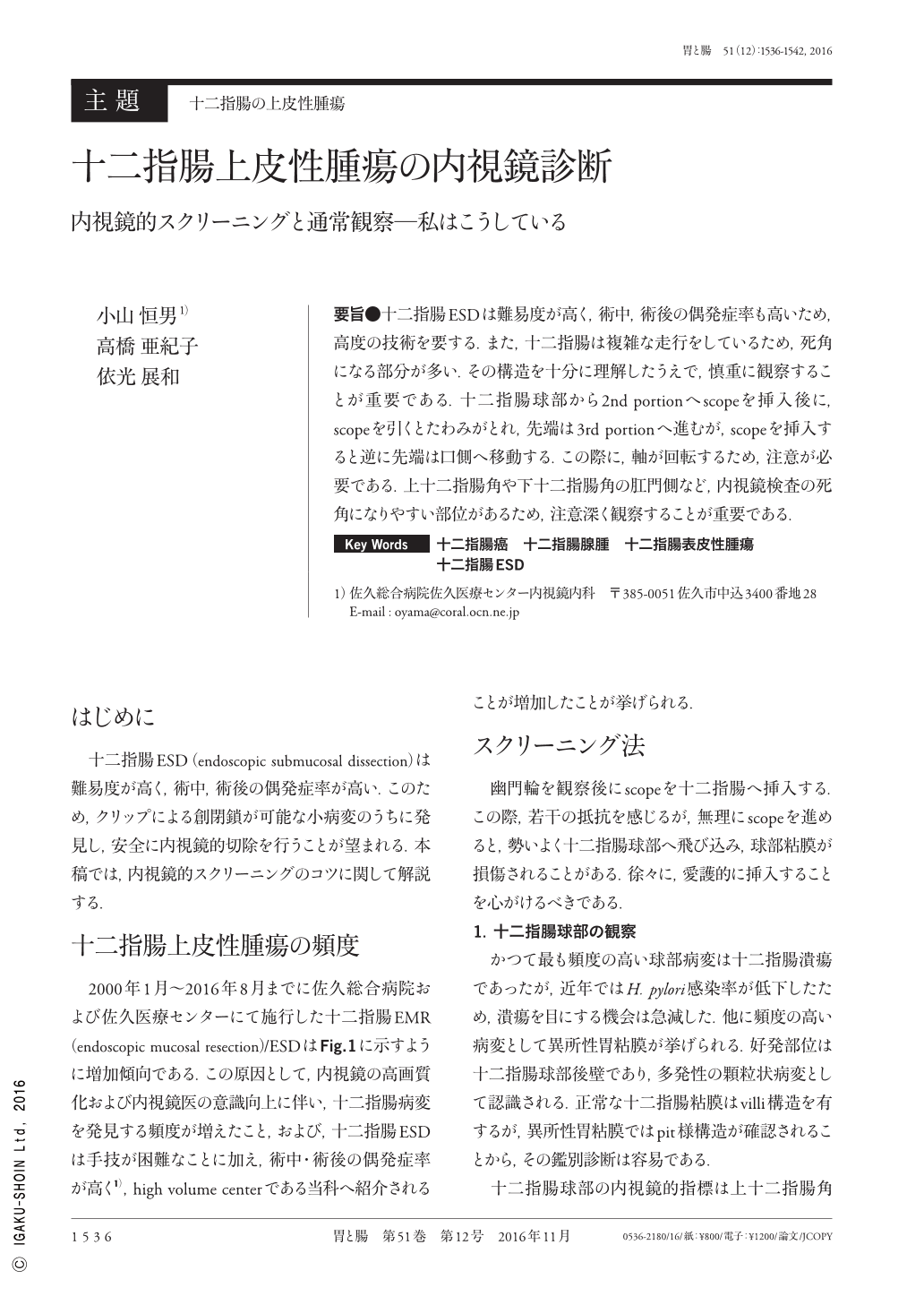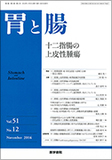Japanese
English
- 有料閲覧
- Abstract 文献概要
- 1ページ目 Look Inside
- 参考文献 Reference
- サイト内被引用 Cited by
要旨●十二指腸ESDは難易度が高く,術中,術後の偶発症率も高いため,高度の技術を要する.また,十二指腸は複雑な走行をしているため,死角になる部分が多い.その構造を十分に理解したうえで,慎重に観察することが重要である.十二指腸球部から2nd portionへscopeを挿入後に,scopeを引くとたわみがとれ,先端は3rd portionへ進むが,scopeを挿入すると逆に先端は口側へ移動する.この際に,軸が回転するため,注意が必要である.上十二指腸角や下十二指腸角の肛門側など,内視鏡検査の死角になりやすい部位があるため,注意深く観察することが重要である.
The number of duodenal EMR/ESD at our institute has been increasing. The complication rate for duodenal ESD is higher than that for gastric ESD. Because the duodenal wall is thin, maneuverability is poor, and bile/pancreatic secretions are impaired. Therefore, early detection of small duodenal tumors is important.
When the endoscope is inserted into the bulb, the duodenal mucosa is sometimes injured mechanically. Therefore, a gentle insertion procedure is required. After the bulb is observed, the endoscope should be turned to the right and angled upward and moved into the second portion of the duodenum. When the endoscope is pulled, its tip can reach the third duodenal portion. If the endoscope is then inserted slightly, its tip will move back, and observation of the second region is possible.
When the scope is removed after visualization of the third region, the endoscopist must carefully consider the orientation of the scope, as the Vater papilla can be observed on the right or upper side.
Many parts of the duodenum, including the anal side of the SDA and IDA, are difficult to observe.

Copyright © 2016, Igaku-Shoin Ltd. All rights reserved.


